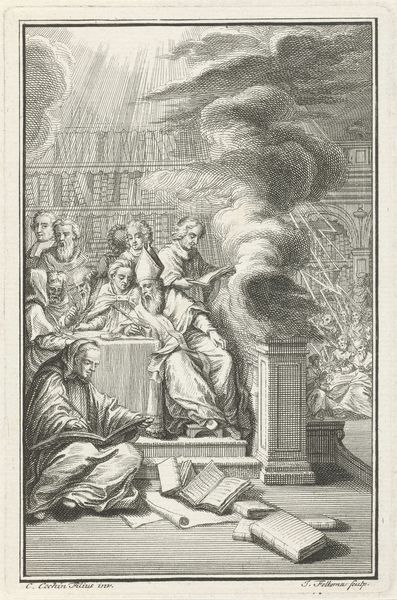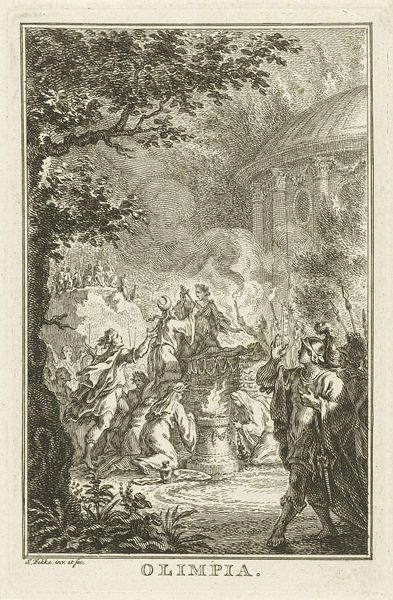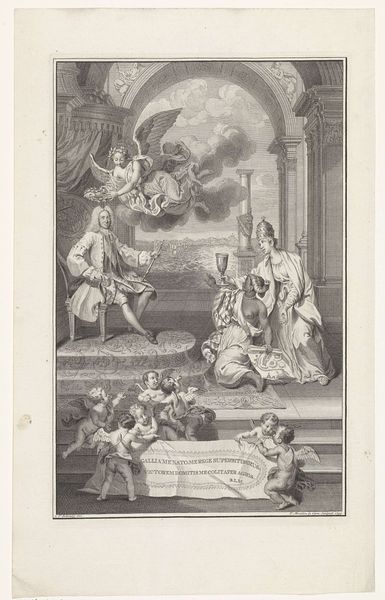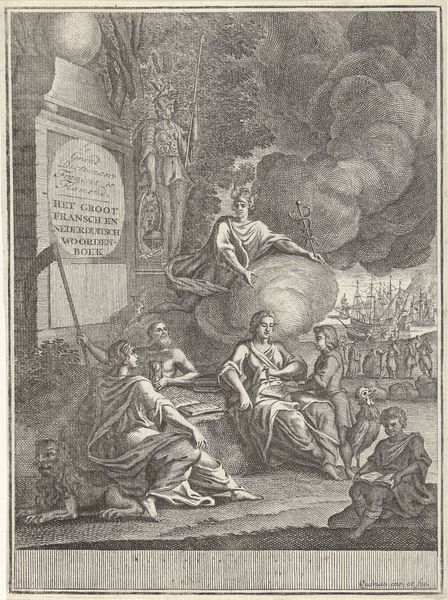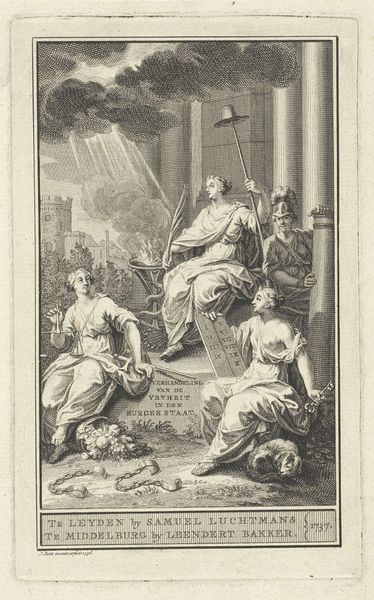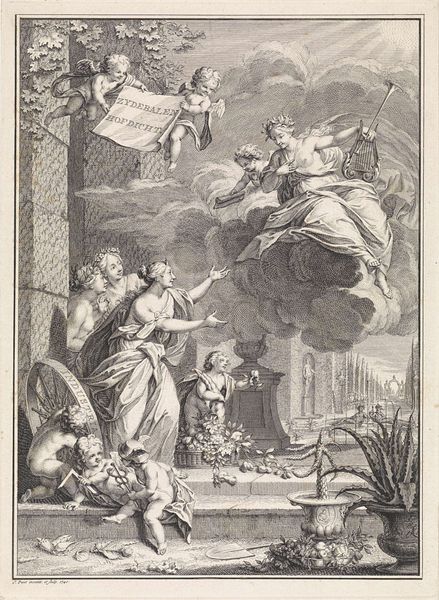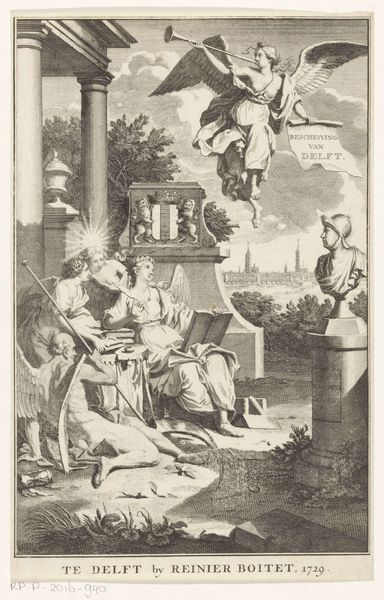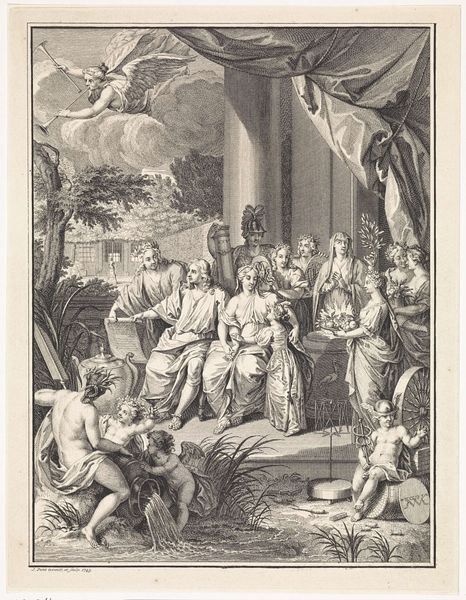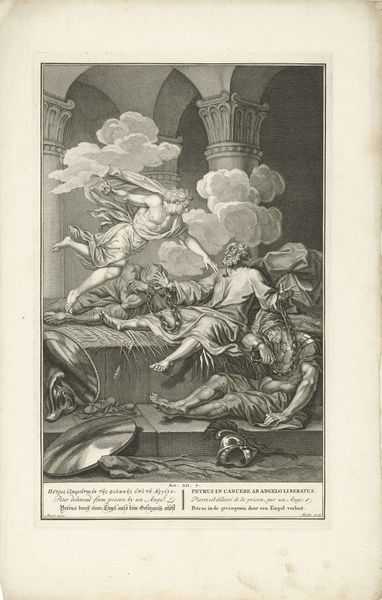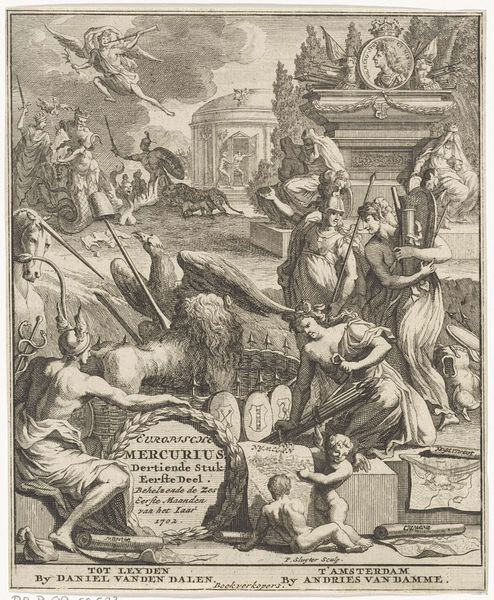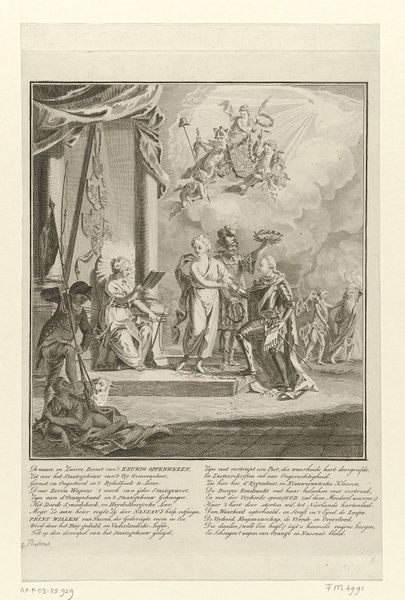
Allegorische voorstelling ter gelegenheid van het huwelijk van William Sterling en Johanna Maria Van Rijckevorsel 1749
0:00
0:00
print, engraving
#
allegory
#
baroque
# print
#
old engraving style
#
genre-painting
#
history-painting
#
engraving
Dimensions: height 253 mm, width 197 mm
Copyright: Rijks Museum: Open Domain
Editor: Here we have Jan Punt's "Allegorische voorstelling ter gelegenheid van het huwelijk van William Sterling en Johanna Maria Van Rijckevorsel," an engraving from 1749. It's just teeming with figures! What story do you think this print is trying to tell? Curator: Well, let's start with the occasion: a wedding. Considering the time, what role did imagery play in solidifying social standing and political alliances through marriage? This isn’t merely a record; it's a carefully constructed message. Editor: So, it's about power as much as romance? I see the couple centrally placed, almost like performers on a stage, but there’s so much more going on. Curator: Exactly! Notice the architectural backdrop, the classical figures, the cupids, the river god at the bottom left, and Venus and Cupid floating on the clouds. Every element reinforces a specific ideology. Think about who this image was *for*. Who was meant to see it, and what effect was it intended to have? Editor: Perhaps it’s for their social circle? To showcase wealth and solidify their place in society. Curator: Precisely. The engraving is as much about demonstrating social status as celebrating love. In 18th century Dutch society, prints like this functioned almost as PR – crafting a particular narrative about the families involved. The circulation and display of such images served specific social functions. Consider how access to such imagery may have been restricted along lines of class and status, too. Editor: It’s fascinating how a wedding image can reveal so much about societal structure! I always thought of art as existing in its own bubble. Curator: Not at all! Art and social dynamics are always intertwined. The image-makers always played a role in creating public perception. We understand the artwork through the power structures and politics of imagery from the past, and also the present. Editor: This really highlights how historical context shapes our interpretation. It definitely adds layers of meaning that I wouldn't have noticed otherwise.
Comments
No comments
Be the first to comment and join the conversation on the ultimate creative platform.
